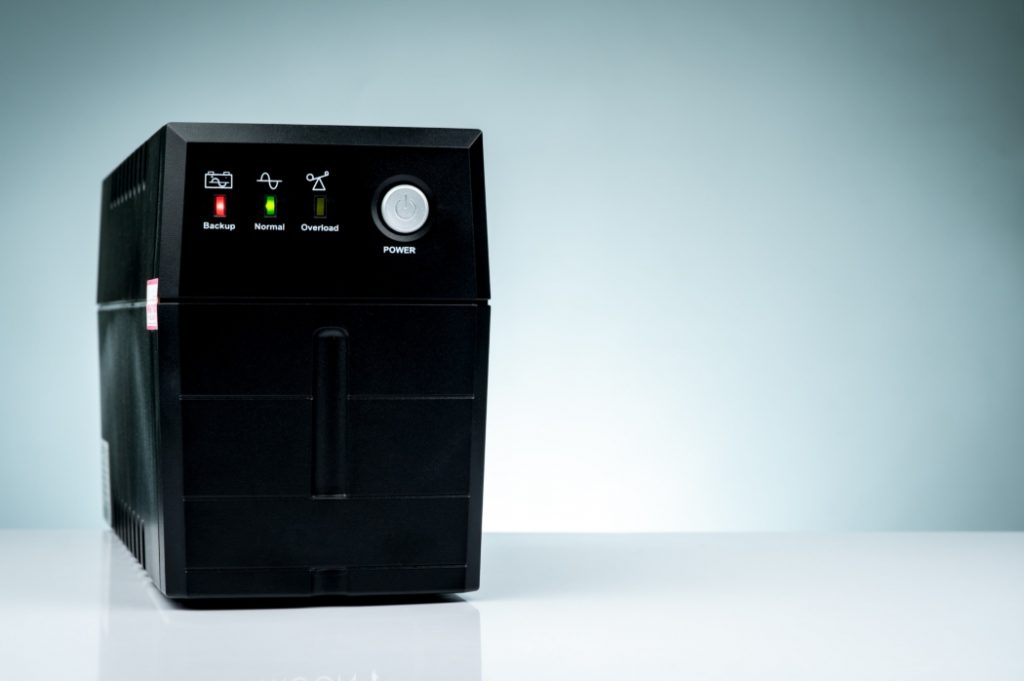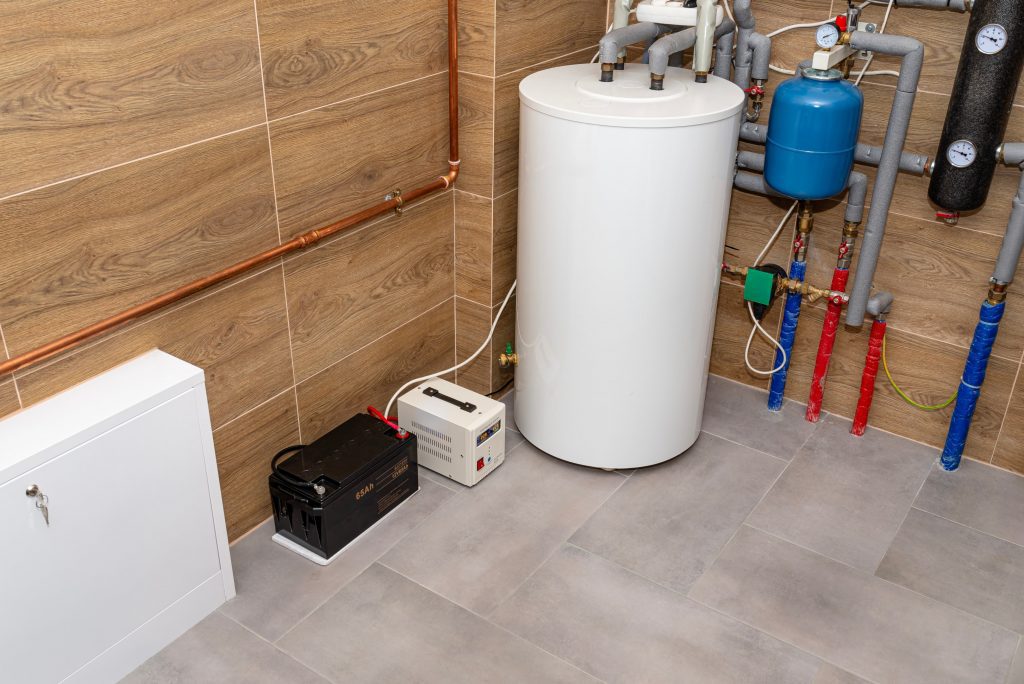What Is A UPS System And How Does It Works
A UPS, or uninterruptible power supply, is a backup system that kicks in during power outages to keep your essential devices running without interruption. It’s a device that protects your electronics from sudden loss of power, ensuring continuous operation. This article will walk you through how a UPS works, the different types available, and why having one is crucial for safeguarding your equipment.
Key Takeaways
- A UPS (Uninterruptible Power Supply) ensures the continuous operation of critical equipment during power disruptions by swiftly switching to stored energy in batteries or supercapacitors.
- There are three main types of UPS systems—Standby, Line-Interactive, and Online—each providing varying levels of power protection suitable for different applications and equipment needs.
- Selecting the right UPS requires consideration of factors such as power capacity, connected equipment wattage, physical space, and specific outlet requirements to ensure optimal performance and reliability.
Understanding Uninterruptible Power Supply (UPS)
An uninterruptible power supply (UPS) is a device designed to keep essential equipment running during interruptions in utility power, ensuring a seamless transition to backup power. This capability is crucial for protecting sensitive electronic equipment, such as computers, medical devices, and network servers, from the detrimental effects of power outages and voltage fluctuations. Uninterruptible power supplies are crucial in preventing significant data loss and hardware damage from brief power disruptions.
A UPS system can switch to stored energy in batteries or supercapacitors almost instantly, providing immediate backup power when the primary power supply fails. This rapid response is essential for maintaining the continuous operation of critical equipment, minimising downtime, and preventing data corruption. The key components of a UPS include a rectifier, batteries, and an inverter, which work together to manage and supply power during outages.
In addition to providing backup power, UPS systems offer power conditioning, ensuring a consistent and reliable power supply to connected devices. This includes:
- Filtering out voltage spikes, surges, and other electrical anomalies that could potentially damage sensitive equipment.
- Stabilising input power.
- Providing a constant voltage, maintaining the integrity and performance of modern electrical equipment, and UPS power supply.
How Does a UPS Work?
The operational mechanism of a UPS system is both fascinating and intricate. At its core, a UPS converts alternating current (AC) from the grid into direct current (DC power) for battery charging, and then back into AC output to supply power to connected devices. This conversion process ensures that the UPS is always ready to provide backup power when needed. Modern UPS systems integrate rectifiers, batteries, and inverters to manage the power supply and ensure continuous operation.
During a power failure, the UPS system operates as follows:
- Seamlessly switches to its batteries to keep devices running without interruption.
- Provides immediate backup power to avoid downtime and protect critical data.
- When the main power supply is restored, it recharges its batteries using the rectifier, preparing for the next potential power disruption.
A key feature of UPS systems is the static bypass, which activates automatically during faults. This bypass mechanism switches the power supply directly to the main grid to maintain electricity flow, ensuring that connected devices continue to operate even if there is an issue within the UPS itself. By understanding these operational details, one can appreciate how UPS systems provide reliable power protection.
Types of UPS Systems
UPS systems are divided into three primary categories: Standby (Offline), Line-Interactive, and Online (Double Conversion). Each type offers varying levels of power protection to suit different needs. The choice of UPS topology should be based on the specific requirements of the application, such as the level of power protection needed and the criticality of the equipment being protected.
Let’s explore each type in more detail.
Standby (Offline) UPS
Standby (Offline) UPS systems are designed to provide backup power by switching to battery power during a power outage. These systems are suitable for less critical applications that do not require continuous power, such as personal computers and basic office equipment. During normal operation, the UPS allows utility power to pass through directly to the connected devices. However, during power failures, the system switches to battery backup to maintain operation.
While Standby UPS systems offer a cost-effective solution for basic power protection needs, they have a transfer time that ranges from only a few minutes to several seconds. This brief delay may not be suitable for highly sensitive equipment, but it is generally acceptable for most home and small office applications.
Despite this, Standby UPS systems provide essential immediate backup power and built-in surge protection, safeguarding devices from voltage spikes and other electrical anomalies.
Line-Interactive UPS
Line-Interactive UPS systems are designed to manage common voltage fluctuations without relying on battery power. This makes them ideal for environments with frequent power issues, such as areas with unstable utility power. Unlike Standby UPS systems, Line-Interactive UPS units include an autotransformer that can regulate voltage by boosting or bucking the incoming utility power.
This voltage regulation feature ensures that connected equipment receives a stable and consistent power supply, minimising the wear and tear on UPS batteries and prolonging their life. Line-Interactive UPS systems are commonly used for network equipment, servers, and other sensitive electronic devices that require a continuous power supply and reliable protection from power fluctuations. Valve-regulated lead-acid line power is essential for maintaining the efficiency of these systems.
Online (Double Conversion) UPS
Online (Double Conversion) UPS systems are designed for mission-critical environments where an uninterrupted power supply is essential. These systems continuously convert incoming AC power to DC and then back to AC, ensuring a stable and high-quality output. This double conversion process eliminates any transfer time, providing the highest level of power protection.
Online UPS systems are commonly used in data centres, hospitals, and other environments where even a brief power interruption could have serious consequences. By providing a constant and clean power supply, Online UPS systems ensure the reliability and performance of critical equipment, making them the go-to choice for applications that demand the utmost in power protection.
Key Features of Reliable UPS Systems
Selecting a UPS involves considering key features that contribute to its reliability and performance. One important feature is pure sine wave output, providing a cleaner power source for sensitive electronic devices. This ensures the proper functioning of equipment such as medical devices, servers, and high-end audio systems.
Efficiency, performance, and dependability are critical attributes of reliable UPS systems. Look for UPS units with:
- Voltage regulators to address fluctuations and stabilising functions, ensuring a consistent power supply.
- Frequency regulation functions if frequency variations are a concern.
- Integrated surge protection to minimise the risk of damage from voltage spikes.
Reliable UPS systems also offer power conditioning and removal of harmonic distortions, safeguarding sensitive equipment. Stabilising both voltage and frequency, these systems ensure continuous and reliable operation of your devices, protecting them from power anomalies.
Applications of Uninterruptible Power Supplies

The applications of UPS systems are vast and varied, spanning both residential and commercial environments. A UPS ensures uninterrupted gaming experiences and protects sensitive electronic equipment from sudden power cuts in home entertainment systems and home theaters. This is particularly important for avoiding data loss and hardware damage during critical moments.
In residential settings, UPS systems maintain internet connectivity and smart home functionality during power failures, keeping Wi-Fi routers and modems operational. This is essential for maintaining communication and control over smart home devices. Additionally, UPS systems are critical for ensuring operational reliability and protecting both personal and professional electronic equipment from power interruptions.
In commercial environments, UPS efficiency reduces energy consumption and operating costs, making it an economical choice for businesses. By providing essential power protection, UPS systems safeguard critical equipment, such as servers, medical devices, and network infrastructure, from power disruptions and ensure continuous operation with a UPS device.
Battery Life and Maintenance of UPS Systems
The lifespan of a UPS can vary significantly, typically ranging from three to five years, influenced by factors such as battery quality, frequency of outages, and environmental conditions. However, the expected lifespan of lithium-ion batteries in UPS systems is much longer, ranging from 8 to 15 years. Regular maintenance routines, such as battery inspections, can significantly enhance UPS performance and longevity.
Ease of maintenance is a vital aspect, with features like user-replaceable batteries enhancing serviceability. Key points include:
- Basic visual inspections can be performed by staff.
- Detailed maintenance must be done by certified technicians.
- Regular maintenance helps to prolong battery life.
- Regular maintenance reduces the chances of critical equipment failure.
Monitoring temperature and humidity around UPS systems is essential for optimal battery performance. Ensuring adequate ventilation and keeping the UPS within the recommended temperature range can prevent overheating and reduce fire risks. Common indicators that a UPS needs maintenance include unusual sounds, visible damage, and frequent alarms.
Selecting the Right UPS for Your Needs

Choosing the right UPS involves several crucial considerations:
- Select a UPS with adequate power capacity to meet or exceed the connected equipment’s requirements.
- Calculate the total wattage of connected equipment.
- Select a UPS with at least 20-30% higher output capacity to ensure reliable power protection.
Consider the following when selecting a UPS:
- Adding more devices can reduce the available runtime during a power interruption.
- The input voltage of the UPS must match that of the equipment to ensure compatibility.
- Different regions have specific outlet types; ensure the selected UPS comes with the appropriate outlets for your location.
When selecting a UPS, consider the following factors:
- Physical space available for installation, as UPS units come in various form factors like rack-mountable or tower.
- High-quality components, which indicate reliability.
- A robust warranty is a sign of a reliable UPS.
By carefully considering these factors, you can select a UPS that meets your specific power protection needs and ensures reliable operation.
The Role of UPS in Renewable Energy

UPS systems support renewable energy by stabilising the power supply and storing excess energy generated during peak production for later use. As renewable energy sources are often inconsistent, UPS systems help to smooth out fluctuations, ensuring a more reliable power supply.
In remote areas, UPS provides essential backup power when renewable generation is inadequate, reducing reliance on the grid. This is particularly important for maintaining continuous power in off-grid locations where renewable energy may not always be available. Integrating UPS systems with incoming power and renewable energy sources creates a more stable and reliable power infrastructure.
UPS systems also contribute to improving the overall efficiency of renewable energy systems by providing power conditioning and ensuring that the power supplied to devices is of high power quality. This not only enhances the performance of connected equipment but also extends the service life of renewable energy systems by protecting them from power fluctuations and anomalies, including the use of UPS switches.
UPS Use in Residential Settings

In residential settings, UPS systems are essential for:
- Maintaining the functionality of home offices
- Preventing data loss during unexpected power outages
- Allowing time to save work and perform a safe shutdown
- Ensuring that at-home medical equipment like CPAP machines operates during power failures
UPS systems provide several important functions during power failures:
- Maintain internet connectivity and smart home functionality by keeping Wi-Fi routers and modems operational.
- Ensure continuous communication and control over smart home devices.
- Protect gaming consoles and home theaters from power issues, ensuring uninterrupted entertainment when utility power fails.
Large UPS systems can prevent food spoilage during outages by powering refrigerators and freezers. They also ensure the operation of aquarium life support systems during power outages, maintaining water circulation and oxygenation. In essence, uninterruptible power supplies are crucial for safeguarding home electronics from surges and outages.
Common Issues and Troubleshooting Tips for UPS Systems
Battery failure is a predominant issue in UPS systems, often indicated by beeping alarms or flashing lights, commonly due to wear from prolonged use or inadequate maintenance. Frequent transitions between AC and battery power can disrupt device performance; utilising UPS models with Automatic Voltage Regulation (AVR) can mitigate this problem.
Loose internal connections within a UPS may lead to erratic operations and require professional assistance for inspection and repair. Poor connectivity can render a UPS ineffective; regular checks on connection points and replacing worn cables are crucial for maintaining functionality. A site wiring fault alert from a UPS indicates serious electrical issues like open grounds or reverse polarity, necessitating thorough inspection by a qualified electrician to prevent voltage drops.
Running diagnostic tests can help identify specific issues within a UPS by generating codes that provide insights into its internal functioning. Outdated firmware can lead to UPS malfunctions; keeping firmware updated is essential for ensuring optimal performance. Communication and monitoring features in a UPS allow users to track system performance and receive alerts.
Summary
Understanding the intricacies of UPS systems is vital for ensuring a continuous and reliable power supply in various settings. From the basics of what a UPS is and how it works, to the different types available and their applications, this blog post has provided a comprehensive overview. UPS systems are indispensable in both residential and commercial environments, offering essential protection against power disruptions and ensuring the smooth operation of sensitive equipment.
In conclusion, selecting the right UPS involves considering factors such as power capacity, runtime, and specific application requirements. Regular maintenance and understanding common issues can further enhance the longevity and performance of UPS systems. Whether in supporting renewable energy or safeguarding home electronics, UPS systems play a crucial role in our modern, tech-driven world. Investing in a reliable UPS is not just a matter of convenience but a necessity for ensuring an uninterrupted power supply and protecting valuable equipment.









